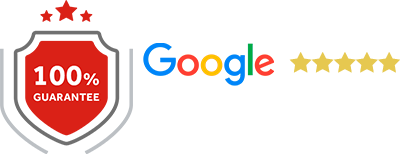Sales
Blog Category pages subscription form.

What is Sales?
Driving Revenue and Building Customer Relationships
Sales is the process of selling products or services by identifying customer needs, providing solutions, and closing deals. It involves building relationships, understanding customer pain points, and guiding potential buyers through their purchasing journey. Sales efforts can be supported by effective marketing strategies, CRM systems, and sales techniques that help businesses achieve revenue goals and grow.
What's New

Tracing the Roots
The Historical Journey of Sales
Sales practices date back to ancient trade routes where merchants bartered and negotiated deals. During the Industrial Revolution, sales became more formalized with the rise of door-to-door salesmen and the introduction of sales commissions. In the 20th century, telemarketing and retail sales took center stage. Today, technology has revolutionized sales with CRM systems, automation, and digital sales channels, helping companies connect with global customers and close deals more efficiently.
Benefits and Drawbacks of Effective Sales
Pros
- Revenue Growth: Sales directly contribute to a company’s bottom line by generating income.
- Customer Relationships: A good salesperson builds long-lasting relationships, creating loyal customers.
- Personalized Solutions: Sales allow businesses to understand customer needs and offer tailored products or services.
- Competitive Advantage: Strong sales strategies help businesses outperform competitors in customer acquisition.
- Scalability: Sales teams can be scaled to meet growing demand, helping businesses expand their reach.
Cons
- Pressure to Perform: Sales teams often face high-pressure environments to meet quotas and revenue goals.
- Time-Intensive: Closing sales can be a lengthy process, especially for high-ticket items or complex services.
- High Competition: Sales professionals often compete with rivals, making it challenging to stand out.
- Customer Rejections: Rejections and objections are part of sales, which can be discouraging.
- Burnout: The fast-paced nature of sales can lead to burnout, especially with constant targets and expectations.
10 FAQs about Sales
What is sales?
Why is sales important for businesses?
How can I improve my sales process?
What is a sales funnel?
How do I handle sales objections?
What is the role of a salesperson?
How can CRM tools help in sales?
What is the difference between B2B and B2C sales?
How do I measure sales success?
What are common mistakes to avoid in sales?
Contact Us
Glossary of Sales Terms
Sales:
The process of selling goods or services by understanding customer needs and offering solutions.
Sales Funnel:
A visual representation of the customer journey from initial awareness to the final sale.
Lead Generation:
The process of attracting and identifying potential customers (leads) who are interested in a product or service.
Conversion Rate:
The percentage of leads or prospects that turn into paying customers.
Sales Pipeline:
A structured process that helps sales teams track the stages of a potential deal, from initial contact to closing.
B2B Sales (Business-to-Business):
Selling products or services to other businesses rather than individual consumers.
B2C Sales (Business-to-Consumer):
Selling products or services directly to individual consumers.
CRM (Customer Relationship Management):
Software tools that help businesses manage customer interactions, data, and sales processes.
Cold Calling:
The practice of contacting potential customers who have not previously expressed interest in the product or service.
Sales Pitch:
A persuasive presentation or conversation designed to convince a potential customer to purchase a product or service.
Sales Quota:
A target or goal set for sales teams or individuals to achieve within a specific timeframe.
Upselling:
Encouraging customers to purchase a higher-end product or additional features to increase the total sale value.
Cross-Selling:
Suggesting related or complementary products or services to a customer during the sales process.
Sales Cycle:
The length of time it takes to close a sale, from the initial contact with a lead to the final purchase.
Prospecting:
The process of identifying potential customers and reaching out to them to generate interest in your product or service.
Objection Handling:
The skill of addressing concerns or objections raised by potential customers during the sales process.
Referral Sales:
Sales generated from customer referrals, often through word-of-mouth or customer recommendation programs.
Sales Forecasting:
Predicting future sales based on historical data, trends, and current sales pipeline activity.
Closing:
The final step in the sales process where the deal is completed, and the customer agrees to make a purchase.
Sales Enablement:
Providing sales teams with the tools, resources, and information they need to close deals more effectively.
Sales Strategy:
A plan or approach that outlines how a business intends to sell its products or services to its target audience.
Follow-Up:
Contacting potential customers after an initial meeting or conversation to continue nurturing the relationship and close the deal.
Inside Sales:
Sales conducted remotely, typically via phone, email, or online meetings, without face-to-face interactions.
Outside Sales:
Sales conducted in person, typically involving travel to meet with clients or customers directly.
Sales Presentation:
A formal presentation of a product or service to a potential customer, usually focusing on its features and benefits.
Value Proposition:
A statement that explains the unique benefits a product or service offers to customers, distinguishing it from competitors.
Sales Commission:
A percentage of the sale value paid to salespeople as a reward for closing deals.
Sales Prospecting Tools:
Software and tools that help sales teams identify and reach potential customers.
Account-Based Selling:
A personalized approach to sales where efforts are focused on specific high-value accounts or clients.
Sales Metrics:
Key performance indicators (KPIs) that track sales activities, such as revenue, win rates, and average deal size.
Sales Territory:
A defined geographic or industry-based area assigned to a salesperson or sales team for focused selling efforts.
Lead Nurturing:
The process of building relationships with potential customers through consistent communication and providing value over time.
Solution Selling:
An approach to sales that focuses on understanding customer needs and offering solutions that solve their problems.
Sales Pipeline Management:
The process of tracking and managing potential sales opportunities to ensure they progress through the funnel.
Consultative Selling:
A sales approach where the salesperson acts as an advisor, helping the customer find the best solution for their needs.
Win Rate:
The percentage of sales opportunities that are successfully closed out of the total number of opportunities pursued.
Follow-Up Email:
A message sent after an initial meeting or conversation to continue engaging a potential customer and move them through the sales funnel.
Sales Automation:
Using software and tools to automate repetitive sales tasks such as follow-ups, lead tracking, and reporting.
Lead Scoring:
A system for ranking potential customers based on their likelihood to purchase, often using criteria like engagement or demographic information.
Discovery Call:
An initial conversation with a potential customer to understand their needs and determine if your product or service is a good fit.
Sales Demo:
A demonstration of a product or service given to potential customers, highlighting key features and benefits.
Qualified Lead:
A lead that has been identified as having a high likelihood of becoming a paying customer based on certain criteria.
Sales Objections:
Concerns or reasons given by potential customers for why they are hesitant to purchase.
Negotiation:
The process of discussing terms, pricing, and conditions to reach an agreement in a sales transaction.
Consultative Approach:
A sales technique where the salesperson focuses on advising the customer and providing tailored solutions.




